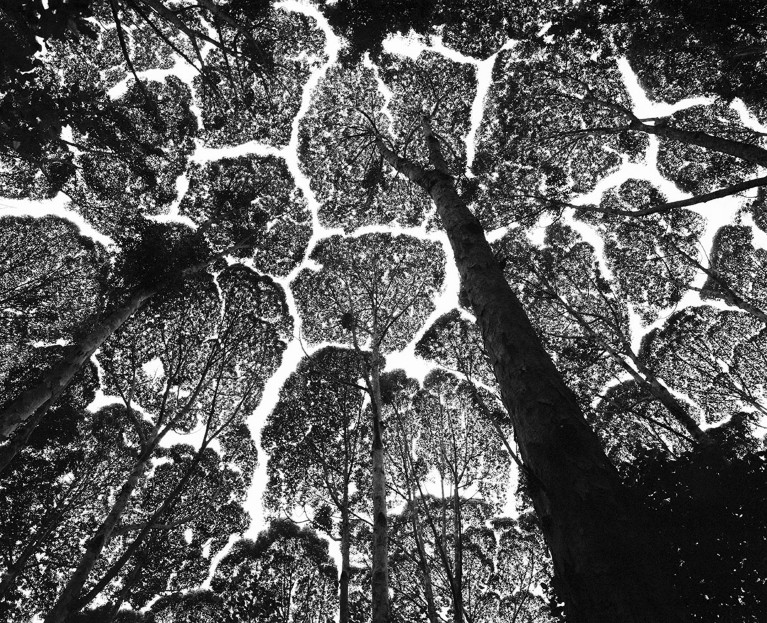- NEWS FEATURE
How much can forests fight climate change?

Kapur trees (Dryobalanops aromatica) in Malaysia avoid overlapping crowns as they grow, which creates a jigsaw-puzzle pattern when viewed from below. Credit: Stuart Franklin/Magnum
Access options
Access Nature and 54 other Nature Portfolio journals
Get Nature+, our best-value online-access subscription
$29.99 / 30 days
cancel any time
Subscribe to this journal
Receive 51 print issues and online access
$199.00 per year
only $3.90 per issue
Rent or buy this article
Prices vary by article type
from$1.95
to$39.95
Prices may be subject to local taxes which are calculated during checkout
Nature 565, 280-282 (2019)
doi: https://doi.org/10.1038/d41586-019-00122-z
References
Griscom, B. W. et al. Proc. Natl Acad. Sci. USA 114, 11645–11650 (2017).
Pan, Y. et al. Science 333, 988–993 (2011).
Unger, N. Nature Clim. Change 4, 907–910 (2014).
Scott, C. E. et al. Nature Commun. 9, 157 (2018).
Pangala, S. R. et al. Nature 552, 230–234 (2017).
Welch, B., Gauci, V. & Sayer, E. J. Glob. Change Biol. 25, 361–372 (2019).
Covey, K. R., Wood, S. A., Warren, R. J. II, Lee, X. & Bradford, M. A. Geophys. Res. Lett. 39, L15705 (2012).
Luyssaert, S. et al. Nature 562, 259–262 (2018).

 Global count reaches 3 trillion trees
Global count reaches 3 trillion trees
 The hunt for the world’s missing carbon
The hunt for the world’s missing carbon
 How to plant a trillion trees
How to plant a trillion trees
 Tropical forests may be carbon sources, not sinks
Tropical forests may be carbon sources, not sinks





